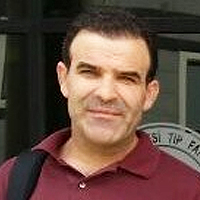MRI-based Tumor Habitat Analysis for Treatment Evaluation of Radiotherapy on Esophageal Cancer
Published on: 24th June, 2024
Introduction: We aim to evaluate the performance of pre-treatment MRI-based habitat imaging to segment tumor micro-environment and its potential to identify patients with esophageal cancer who can achieve pathological complete response (pCR) after neoadjuvant chemoradiotherapy (nCRT).Material and methods: A total of 18 patients with locally advanced esophageal cancer (LAEC) were recruited into this retrospective study. All patients underwent MRI before nCRT and surgery using a 3.0 T scanner (Ingenia 3.0 CX, Philips Healthcare). A series of MR sequences including T2-weighted (T2), diffusion-weighted imaging (DWI), and Contrast Enhance-T1 weighted (CE-T1) were performed. A clustering algorithm using a two-stage hierarchical approach groups MRI voxels into separate clusters based on their similarity. The t-test and receiver operating characteristic (ROC) analysis were used to evaluate the predictive effect of pCR on habitat imaging results. Cross-validation of 18 folds is used to test the accuracy of predictions.Results: A total of 9 habitats were identified based on structural and physiologic features. The predictive performance of habitat imaging based on these habitat volume fractions (VFs) was evaluated. Students’ t-tests identified 2 habitats as good classifiers for pCR and non-pCR patients. ROC analysis shows that the best classifier had the highest AUC (0.82) with an average prediction accuracy of 77.78%.Conclusion: We demonstrate that MRI-based tumor habitat imaging has great potential for predicting treatment response in LAEC. Spatialized habitat imaging results can also be used to identify tumor non-responsive sub-regions for the design of focused boost treatment to potentially improve nCRT efficacy.
A Rare Case Report: Spinal Metastasis of Anaplastic Pleomorphic Xanthoastrocytoma
Published on: 27th January, 2025
Anaplastic Pleomorphic Xanthoastrocytoma is a very rare tumor of the Central Nervous System (CNS). BRAFV600E mutation is a common mutation in pleomorphic xanthoastrocytoma. We present a 52-year-old male patient who underwent total resection due to a temporal lobe mass. The primary tumor in the temporal lobe was given postoperative radiotherapy. During follow-up, genetically and histologically proven metastasis was detected in the paraspinal region. The adjuvant RT was given to metastasis after surgery. The patient, who used the combination of dabrafenib and trametinib after recurrence, is being monitored in remission.
GELS as Pharmaceutical Form in Hospital Galenic Practice: Chemico-physical and Pharmaceutical Aspects
Published on: 10th February, 2025
This work aims to describe the chemical-physical properties of various GELS used as galenic forms in hospital pharmacy practice. After an overview of the excipients and method used three preparations are reported. LAT GEL is used as an anesthetic in an emergency (pediatry ) in treating little Traumatic lacerations of the skin and scalp, calcium gel is used as an antidote for fluoride acid burns, and Lidocaine viscose 2% oral gel is used in some pathological conditions like severe esophagitis in onco - hematological patients after radiotherapy or chemotherapy. The galenic role in the situation of some drug shortages was also analyzed.
A Short Synthesis Concerning Biological Effects and Equivalent Doses in Radiotherapy
Published on: 15th April, 2017
The limits of classical equivalent computation based on time, dose, and fractionation (TDF) and linear quadratic models have been known for a long time. Medical physicists and physicians are required to provide fast and reliable interpretations regarding the delivered doses or any future prescriptions relating to treatment changes. In this letter, we propose an outline related to the different models usable for equivalent and biological doses that are likely to be the most appropriate. The used methodology is based on: the linear-quadratic-linear model of Astrahan, the repopulation effects of Dale, and the prediction of multi-fractionated treatments of Thames.




